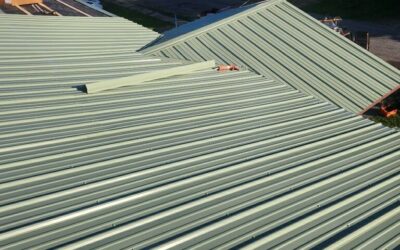Roof Colors: What Are Your Options and The Pros and Cons?
When it comes to roofing, most homeowners focus on structural integrity, material durability, and cost-efficiency. However, one of the most impactful decisions you’ll make for your home is the color of your roof. Not only does the color affect the curb appeal and aesthetic appeal of your home, but it also influences energy efficiency, maintenance, and the overall longevity of the roofing system.
Whether you’re building a new home or replacing an old roof, understanding the different roof color options, their pros and cons, and how they can affect your home is essential for making an informed decision. This blog will dive deep into popular roof colors, their advantages and disadvantages, and key factors to consider when choosing the best color for your roof, including heat management, durability, dirt, and cleaning requirements.
What Are Your Options for Roof Colors?
Roofing materials come in a wide range of colors, making it easy to find an option that complements your home’s exterior design. Here are the most common roofing colors available on the market today:
- Black Roofs: Black roofing is a classic and bold choice, offering a sleek, sophisticated look that pairs well with both modern and traditional home designs. Black roofs are especially popular in urban and contemporary homes.
- Gray Roofs: Gray roofs offer a neutral and subtle color option that pairs well with most home exteriors. The color ranges from light to dark gray, making it versatile for different architectural styles.
- Brown Roofs: Brown roofing complements earthy tones and is perfect for homes in rural or natural settings. It’s often chosen for its warm, inviting appearance and works well with wood and stone elements.
- Red Roofs: Red roofs are often used in Spanish, Mediterranean, and colonial-style homes. This color adds vibrancy and a touch of personality to a home, especially in areas with a lot of sun exposure.
- Blue Roofs: Blue is a rare yet attractive option, especially for coastal and beach homes. The color reflects the surrounding skies and oceans, adding a refreshing and unique flair to the property.
- Green Roofs: Green roofing can range from light to dark shades and is often seen in eco-friendly homes or homes surrounded by greenery. The color blends in well with nature and can contribute to an organic aesthetic.
- White Roofs: White roofs are increasingly popular due to their energy-efficient properties. They are often used in areas with extreme heat and are ideal for reflecting sunlight, helping to reduce energy costs.
Popular Roof Colors and Their Pros and Cons
Now that we’ve covered the basic color options for roofs, let’s take a closer look at the popular choices and analyze the benefits and drawbacks of each.
1. Light Roofs (White, Light Gray, Light Beige)
Light-colored roofs have gained popularity in recent years due to their significant advantages in terms of energy efficiency and heat management. These roofs are typically made from reflective materials like white shingles or light-colored tiles that can bounce sunlight away, keeping your home cooler in the summer.
Pros of Light Roofs:
- Energy Efficiency: One of the biggest advantages of light-colored roofs is their ability to reflect sunlight and heat, which can reduce the amount of energy needed for air conditioning in hot weather. This translates into lower energy bills and a more comfortable living environment.
- Better Heat Management: Light-colored roofs are highly effective at managing heat, which is particularly beneficial in warmer climates. Reflective roofs help keep attic temperatures down, reducing the strain on your HVAC system.
- Environmentally Friendly: The energy efficiency of light-colored roofs can also contribute to reducing your home’s carbon footprint, making them an environmentally-friendly option.
Cons of Light Roofs:
- Prone to Dirt: Light-colored roofs are more likely to show dirt, debris, and stains. Over time, these marks may become more visible, making the roof appear dingy.
- Aesthetic Limitations: While light roofs are practical, they may not always suit the aesthetic of every home. If you’re looking for a roof that blends with natural surroundings or adds a bold statement, lighter colors may not be the best fit.
- Less Variety in Design: Light-colored roofs tend to offer fewer design options and may be limited in the number of materials available.
2. Dark Roofs (Black, Charcoal Gray, Dark Brown)
Dark roofs, including black, charcoal, and dark brown, are known for their classic, elegant look. They’re a popular choice for homeowners who want a roof that adds character and visual appeal.
Pros of Dark Roofs:
- Sophisticated Appearance: Dark roofs provide a high-contrast, elegant look that can enhance the overall aesthetic of a home. They work well with a variety of architectural styles, from traditional to modern.
- Durability: Dark roofs tend to absorb heat better than light roofs, which may increase their durability in colder climates. The heat absorption can also help melt snow and ice during the winter months.
- Less Prone to Stains: Darker roofs tend to hide dirt and debris better than lighter roofs, which means less frequent cleaning and maintenance.
Cons of Dark Roofs:
- Heat Absorption: Dark-colored roofs absorb more heat from the sun, which can raise indoor temperatures and increase cooling costs in hot climates. This can be a major drawback in areas with prolonged summer temperatures.
- Fading Over Time: Dark roofs are more susceptible to fading and discoloration due to prolonged sun exposure, which may affect the roof’s appearance and longevity.
The Durability of Roof Colors: What to Expect
Roof durability depends on various factors, including the material, color, and climate. Color can have an indirect effect on the roof’s durability, particularly in how it interacts with the sun and weather conditions.
- Dark Roofs and Heat Absorption: As mentioned earlier, dark roofs absorb heat more than lighter ones. While this is beneficial in colder climates for snow and ice melting, the constant heat exposure can lead to quicker deterioration of the roofing material. For example, dark asphalt shingles may fade or crack faster in hotter climates.
- Light Roofs and Reflectivity: Light-colored roofs have the opposite effect—they reflect sunlight, reducing the amount of heat absorbed by the roof. This can prevent some of the wear and tear caused by heat, extending the roof’s lifespan in hot climates. However, they may be more susceptible to damage from intense storms or heavy rainfall, as dirt and debris are more visible and may cause long-term staining.
What Is the Role of Heat Management?
When choosing a roof color, one of the most important considerations is how the color will affect your home’s temperature. Heat management is crucial, especially in areas with extreme weather conditions. A roof’s color plays a significant role in how much heat it absorbs or reflects.
- Heat Reflection vs. Absorption: Dark roofs absorb heat, which can raise the temperature inside your home, while light roofs reflect heat, keeping the interior cooler. If you live in a hot, sunny area, a light-colored roof can significantly reduce your cooling costs by keeping your home cooler and lowering the strain on your air conditioning system.
- Energy Efficiency: Roofs that reflect more sunlight reduce the heat load inside your home. This can lead to lower energy consumption, reduced carbon emissions, and more comfortable living spaces. In contrast, darker roofs increase the need for air conditioning during summer months, leading to higher energy consumption.
- Cool Roof Technology: Many modern roofing products come with “cool roof” technology, which helps reflect heat while maintaining durability. This can be found in both light and dark-colored materials, providing an excellent option for homeowners who want to balance heat management with aesthetic appeal.
Dirt and Cleaning Requirements
Maintaining the appearance and functionality of your roof requires regular cleaning and care, and the color of the roof can play a role in how often cleaning is needed.
- Light Roofs: Lighter-colored roofs tend to show dirt and debris more easily. This means they might require more frequent cleaning to maintain their appearance. Stains from moss, algae, or mold are also more noticeable on light-colored roofs. Homeowners may need to wash the roof more often to keep it looking pristine.
- Dark Roofs: Dark roofs are less likely to show dirt, debris, and stains, which can be a huge advantage in terms of maintenance. However, they are still susceptible to moss or algae growth, especially in humid or damp environments. Regular inspection is still required to prevent buildup and ensure the roof remains in good condition.
Conclusion: Choosing the Best Roof Color
Selecting the right roof color is a significant decision that impacts the appearance, durability, and energy efficiency of your home. Each color offers distinct advantages and drawbacks depending on your geographic location, home style, and aesthetic preferences.
- Light Roofs: Best for warmer climates, offering energy efficiency and heat management but requiring more maintenance to keep them clean and aesthetically pleasing.
- Dark Roofs: Ideal for colder climates, offering a timeless look and durability, but may increase cooling costs in hot climates and require more maintenance to prevent fading.
When selecting a roof color, consider your home’s architecture, your local climate, and your maintenance preferences. Additionally, it’s always a good idea to consult with a professional roofing contractor to help you make the best decision based on your needs and budget.
As an Owens Corning Preferred Contractor, S&K Construction and Remodeling LLC offers expert advice and quality roofing solutions throughout the Northeast Ohio region. Contact us today to explore your roofing options and find the perfect color for your home!
 (440) 307-2060
(440) 307-2060




